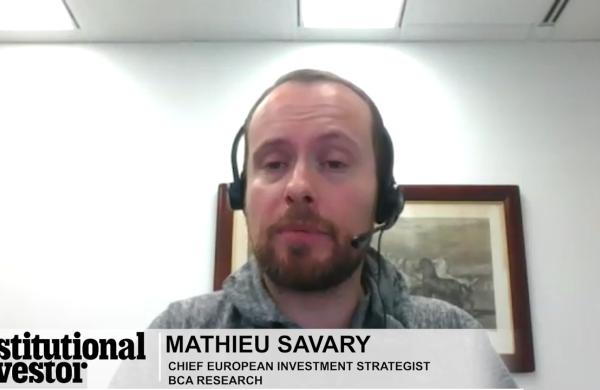Many CEOs of Fortune 500 companies involved in science and technology have become celebrities. Hewlett-Packard Co.'s Carleton (Carly) Fiorina and Microsoft Corp.'s Steve Ballmer spring to mind.
Not Engelhard Corp.'s Barry Perry. Although his Iselin, New Jerseybased metals and chemicals supplier is a key provider of products to many high-tech companies -- and Perry, 57, is as technically versed and articulate as any Silicon Valley sage -- he acknowledges that "it takes explaining" to get out the story on his organization.
Perry, however, isn't one to court publicity. Engelhard's research scientists have made major strides in two futuristic fields that spark lots of investor interest: fuel cells, the hydrogen-based systems that could reduce dependence on fossil fuels; and nanotechnology, the manipulation of particles at the molecular scale to create stronger or more flexible materials. Yet Perry prefers not to join in the media frenzy over tech.
"What would hyping nanotechnology or fuel cells do for us?" he asks. "Maybe a little boost in the stock that we'd lose in 90 days."
The CEO admits that he has a hard time understanding what moves Engelhard's share price. Investors, he says, find it hard to pigeonhole a $3.8 billion-in-revenues company that is variously involved in lubricating engines, purifying water and liquefying gas, and which doesn't have a real peer. Although Engelhard has rivals within its lines of business, including BASF and W.R. Grace & Co. in chemicals and Johnson Matthey and Umicore in metals and mining, not one does everything that it does.
Engelhard's shares have been up of late, hitting a 52-week high of $29.15 on September 2, $10 above their March low for the year. The company's market capitalization is $3.6 billion. Perry says of the stock gains, "I can only think that through the past couple of difficult years, we've been consistently on message and on performance targets."
Engelhard is also a beneficiary of August's blackout in the northeastern U.S.: The power failure generated interest in alternative energy sources like fuel cells, and Engelhard's share price has risen about $4 since the lights went out.
The company recently won a $5 million development grant from the U.S. Energy Department. "There are eight technologies that facilitate fuel cells, and we have all of them," Perry notes. But he's careful to add that "fuel cells are five to ten years away."
In July Engelhard posted second-quarter earnings of $54 million, or 43 cents a share, on sales of $929 million. Although sales were down 5 percent, and net income had fallen 10 percent, from a year earlier, J.P. Morgan Securities specialty chemicals analyst Jeffrey Zekauskas calls the operating results "solid" and maintains his overweight rating. He anticipates earnings growth "from recovery in the paper markets, new products in the refinery area and innovation in auto and diesel truck catalysts."
A University of Massachusetts graduate with a BS in plastics engineering, Perry spent 22 years working in specialty-materials units at General Electric Co., followed by five years with pharmaceuticals giant Rhône-Poulenc (now Aventis) before becoming head of Engelhard's pigments and additives group in 1993. In 1997 he was named president and COO and began a three-year transition to the top spot that Orin Smith had held for 16 years.
Perry recently discussed Engelhard's outlook with Institutional Investor Assistant Managing Editor Jeffrey Kutler.
Institutional Investor: How do you get your rather complicated story across without oversimplifying it?
Perry: I've boiled it down to five things that communicate what we do. We are: a surface and materials science company; technology-based and market-driven; powered by ingenuity; fueled by a passion for productivity; and managed in a seamlessly integrated, decentralized fashion.
What does all that mean in practice?
It means taking technology from one business and creating opportunity in another. It means being truly seamless across the business units.
How does "seamless" work?
Seamless means being able, for example, to use our pigment technology to create a new line of products in the refinery market that boosts gasoline yields. Coming up with that wasn't rocket science. It had a lot to do with seamlessness and ingenuity.
Don't you run the risk of dissension among business units as they compete to control their innovations?
It's true that in a traditional federation-of-businesses model, the culture tends to be very guarded: "I'll show you what I have if you show me yours." Today we're organized around effective reviewing and managing of technology programs, and everybody has a say. In that example of using pigments to create a refinery product, we brought three business units together to look at capacity requirements and at what generates the best return for the enterprise, not just for one business unit. That led us to realize that we had opportunities in new specialty markets like concrete additives, crop protection and bacteria control.
Has the technology downturn forced cutbacks at Engelhard?
We've held pretty steady. The workforce is about 6,400, and that has been flat for the past two to three years. Some areas had cuts, others had increases, but there have been no massive layoffs. This is where that passion for productivity comes in: You want to be constantly shifting where and how you make things. We've had plant closings, but we're now expanding a plant in China for the third time. To me, cost-cutting is a tool of contraction; productivity is a tool of growth. The last thing you want to be is a high-cost producer of new technology. That just invites competition and stagnates your own growth.
You're exposed to cyclical industries like auto and energy. How do you escape the downdraft?
Markets are cyclical, but companies shouldn't be. Take our process technologies segment. It supplies to the chemicals and refining markets, which have been in the doldrums for five years. If we were just doing the same-old same-old, that segment would be declining in double digits. It has been up modestly [secondquarter sales increased 3 percent, to $140 million; earnings rose 7 percent, to $25 million] because it has been getting into new areas like sulfur removal systems and pollutant controls. While we are focusing on productivity because the core market is in a down cycle, we can still leverage core competencies to create growth opportunities. Net net, the growth is slow, but given the world around us, that's not a bad place to be.
How significant is your investment in research and development?
It's a little more than 4 percent of technology revenues, and we haven't cut it even in tough times. In fact, we've invested in ways that enable us to do more experiments in a given unit of time, thanks to robotics and other process improvements.
What technologies are hot?
We're careful about that. I got some criticism about a year ago when everybody was hyping fuel cells and I said they were premature. Today we have a fuel cell business with a small core group of about 15 people, doing a few million dollars a year. And we draw on the technology and assets of five business units at 15 sites worldwide. People realize that I was right, and hopefully we'll start to get some recognition for that. Same thing with nanotechnology. This company has been working on the nano scale forever, but we don't advertise it much. Others got caught up in the recent hype, but it isn't sustainable.
How do you reconcile that attitude with the risk-taking entailed in R&D?
There's an affliction companies have, and we had it -- always looking for the home run. You tend to think that the investment community will react to the home run. And it does. But in this technology-driven business, there aren't a lot of home runs. There are a lot of singles and doubles, and that's what we hit. We play to win the game, not just to swing for the fences. Which means we don't go for bad pitches.





